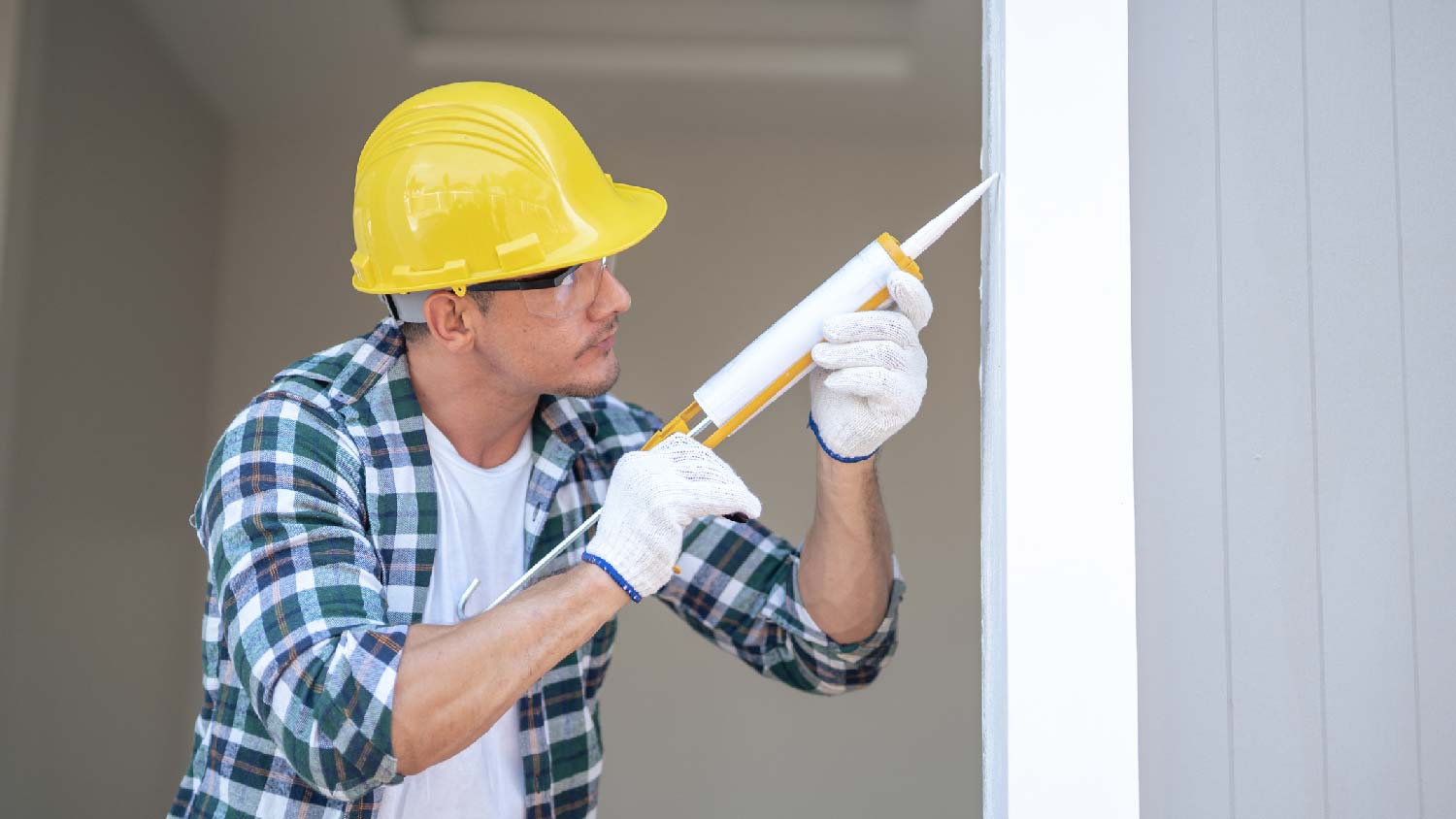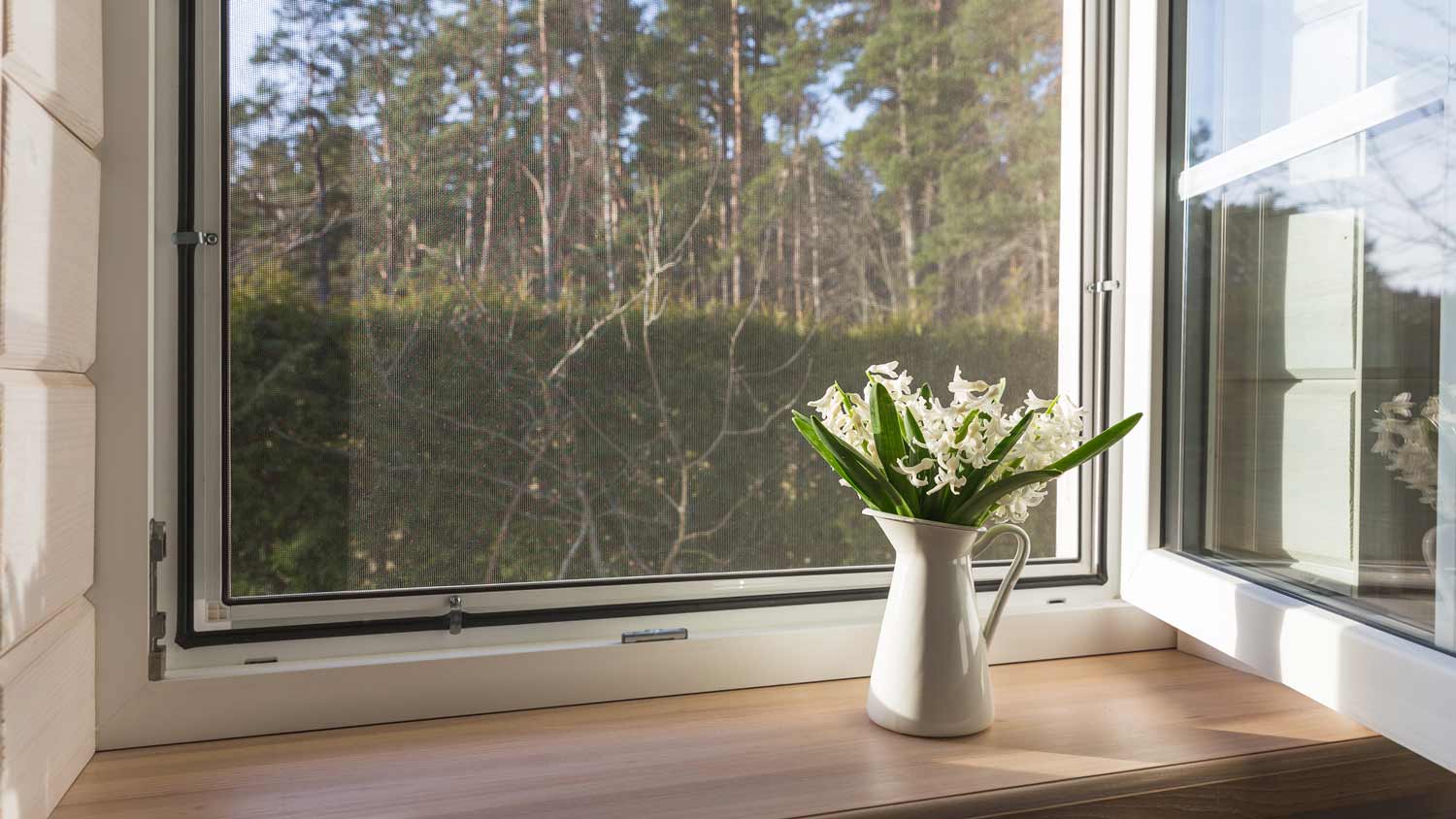What Is a Door Jamb and How Does It Differ From the Frame?
Never get in a jam again by getting to know your door jamb


A door jamb is a part of the frame that surrounds the door slab.
It commonly includes two-side jambs and a one-head jamb.
Jambs may feature a stop, a strike plate, and hinges.
A door may not close properly if the door jamb is not level.
A door jamb is one of the most important door parts to keep in your vocab arsenal when you're preparing to repair or build a door from scratch. While a door jamb is a crucial part of a door frame, the term does not refer to the whole structure. Let's break down what a door jamb is and how it's used in the realm of door terminology.
What Is a Door Jamb?

The jamb is a part of a door that refers to the two vertical boards and one horizontal board around the door slab. In some door styles, doors come prehung on an existing door jamb. In other cases, you'll need to add the jamb to the frame piece by piece.
Let's break down the parts further. The two vertical door jambs attach to the head jamb and carry the weight of the door. When you look at the door slab, you'll see that it attaches to two vertical boards with a latch on one side and the hinges on the other side. The head jamb attaches to the top of the door's frame. Each part of the door jamb must be plumb—or properly level and square—to ensure the door opens and closes properly.
You'll see other words used interchangeably either for the door jamb or specialty versions of door jambs. For example, you may see the terms latch jamb, hinge jamb, and head jamb to indicate the three parts.
Parts of a Door Jamb
A door jamb is comprised of three or four main parts depending on if it’s an interior or exterior door:
Side jambs: Every door has two side jambs that run vertically along the door frame. One side jamb has door hinges on it, and the other has a strike plate and possibly a deadbolt plate.
Head jamb: The head jamb, also referred to as a door head, is a horizontal section at the top of the door. It has two notches on either end that the side jambs fit into.
Door sill: Exterior doors have a sill—a horizontal section at the bottom of the door—for security and blocking out pests, wind, and precipitation.
Door jambs may contact several other parts, but they are considered parts of the door frame rather than parts of the door jamb. Such examples include mullions, weather stripping, and sidelights.
What Is the Difference Between a Door Jamb and a Door Frame?

If you're learning how to frame a door, you need to know about the jamb and its surrounding parts. The terms door jamb and door frame are often mixed up, but they're a bit different. A door frame includes a door jamb, but the jamb is just one part of a frame. A door frame also includes elements more integrated with the structure of your wall, such as the studs, header, sill, and sole plates.
Types of Door Jambs

When buying or building a door jamb, consider your choice of materials and styles depending on the type of door you plan to install. Jambs can vary ever so slightly and can accommodate interior, exterior, swinging, or even custom-fit doors for older homes.
Pocket Jambs
Pocket jambs are for pocket doors—a style of door that slides into the wall rather than swinging open on hinges. When fully open, a pocket door disappears into a wall cavity. The jambs used for these doors have a slot that allows the door to slide in and out, and they leave room to install a track at the bottom.
Flush Jambs
A flush jamb sits perfectly in line with the door and door frame. It creates a sleek, modern look with no raised edges and minimal space around the door. Even though flush doors look high-end, they are cost-effective and compatible with hollow and solid core doors.
Split Jambs
A split jamb involves a horizontal section divided—or split—into two pieces. It makes it easier to fit jambs onto walls with varying widths, which is often the case in older homes. Split jambs come with casing already attached to each edge, eliminating one possible step in the installation process. It’s a good option when renovating an existing door frame.
Flat Jambs
This style denotes jambs that don’t have recessed grooves and are simply flat pieces of wood. Flat jambs don’t have stops, also called rabbets, to prevent the door from swinging through the frame. However, you can add stops while installing the door if you prefer.
Common Door Jamb Issues
Door jambs may be at the heart of why your door isn't closing correctly. As moisture, time, and temperature warp the door or joints around your door jamb, they can swell and shift the door's alignment. Even a minuscule change in the door jamb can keep the door from opening or closing smoothly. When your door gets caught on the frame, it means that the door jamb is no longer plumb. Your door jamb issue could also stem from:
Misaligned lockplates and latches
Misaligned hinges
Material deterioration
Foundation issues that affect the wall and floor
A poorly installed jamb
The material of the door slab has warped
You can rule out an incorrect door alignment by calling a local door installation team. These pros will be able to identify which part of your door needs to be repaired or replaced.
If you’re still experiencing issues and have ruled out the door-specific causes above, it could be caused by shifts or damage to your home’s foundation. A door that doesn’t close easily or has an uneven gap between the frame is a potential sign that your foundation needs repair. It’s significantly less common than excess humidity or a misaligned door hinge but should be taken seriously, given the cost and scope of foundational issues.
Cost to Install a Door Jamb
The cost to install a door jamb depends on whether it’s a new installation or a replacement. Door jambs are usually installed along with the entire door frame, which costs between $200 to $700. The jamb is only a small portion of this, costing $150 to $250 for parts and labor by itself.
DIY vs. Hiring a Pro
Installing or replacing a door jamb by yourself is naturally cheaper than hiring a pro. DIY door jamb kits cost $30 to $70 and take a few hours to set up. It’s a task of intermediate difficulty that’s manageable for homeowners with framing experience. However, adding a new door frame and installing a door is trickier and more expensive—the average cost to add a new door is $1,165. Professional door installation is often worth the additional labor cost to ensure the job is done correctly.
Ginny Bartolone contributed to this article.
Frequently Asked Questions
No, you cannot install a door without a jamb. The jamb is where the hinges, strike plate, and trim are attached. A person could ostensibly attach the hinges to the door frame itself, but it would hamper the door from opening and closing like normal. Door jambs also provide crucial support for the door and security for exterior entryways.
Yes, prehung doors include a door jamb. Prehung doors are sold as a single piece with the door frame already constructed, including the hinges. The only part missing is the trim, which you add after fastening the door. They are more expensive than slab doors but are quicker and easier to install. Prehung doors come in an array of sizes, so there’s likely an option to fit any doorway you need.





- How to Repair a Door Jamb and Prevent Damage
- What Is a Split Jamb Door and When Should You Use It?
- All the Parts of a Door: The Homeowner’s Guide
- How to Fortify Your Exterior Doors Against Forced Entries
- How to Fix a Door That Sticks: 5 Different Methods
- 8 Common Reasons Your Door Won’t Open (and How to Fix It)
- Garage Door Framing Diagram: Know the Measurements, Parts, and More
- 7 Common Door Problems and What Causes Them
- Who to Hire to Replace a Door Frame
- How to Fix a Gap Between a Storm Door and Frame to Seal Your Home

 - Derek Rose.png?impolicy=thumbnail)








